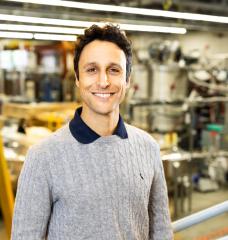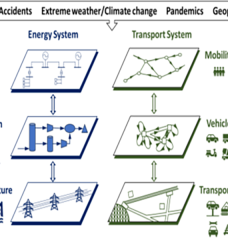
Amanda Hubbard, principal research scientist at MIT’s Plasma Science and Fusion Center (PSFC), has been awarded a 2020 Secretary of Energy’s Appreciation Award.
The award honors Hubbard’s role in the formation of the U.S. Burning Plasma Organization (USBPO), a national association of scientists and engineers involved in researching the properties of magnetically confined burning fusion plasmas. There, she has taken on leadership positions since 2006, including first council vice chair, the council chair, and finally deputy director from 2011 to May 2020, when her service concluded.
The award certificate acknowledges Hubbard’s contributions to the USBPO, noting the organization’s importance to fusion experiments like ITER, a next-generation device designed to produce net fusion energy. It states, “Your efforts have facilitated effective communication between members of the domestic fusion program and fostered strong interactions with international partners.”
These communication efforts include a monthly newsletter, regular webinars, and technical workshops on burning energy science challenges. Hubbard considers these efforts to be the great strength of the organization, the way they bring together a cross-section of researchers to discuss issues across topical areas and institutions.
“I especially enjoyed organizing the web seminars,” says Hubbard. “We were ahead of our time with Zoom. We showed it is possible to have an actual live discussion with a large group. The opportunity to help form and shape a new organization was also a rare privilege.”
The award was presented to Hubbard by James van Dam, U.S. Department of Energy (DoE) associate director of science for fusion energy sciences, in a virtual ceremony held last month. In his remarks, van Dam provided background on the award, which was established in 2007, noting that the DoE “has a longstanding tradition of recognizing individuals who go above and beyond the call of duty in their work endeavors.”
PSFC Director Dennis Whyte, who spoke at the ceremony, observed that “This award, rarely given to persons outside the government, is a fitting tribute to Amanda’s extraordinary leadership in fusion sciences on the national and world stage.”
Hubbard thanked the PSFC for encouraging her to take on these responsibilities, along with the many colleagues she has worked with, singling out van Dam, who was the first USBPO council chair and then director, and Charles Greenwald, the current director of USBPO.
Since leaving her leadership position at USBPO, Hubbard has been able to focus all her time on PSFC fusion projects and collaborations, including plasma experiments on ASDEX Upgrade in Germany and high-temperature superconductor magnet development for SPARC, which anticipates producing a burning plasma and net energy once it is online.
“The time has come to set term limits for myself and get back to full-time R&D,” says Hubbard, “and hand over leadership to an enthusiastic member of the ‘ITER Generation.’ Or should I say, ‘Burning Plasma Generation.’”





